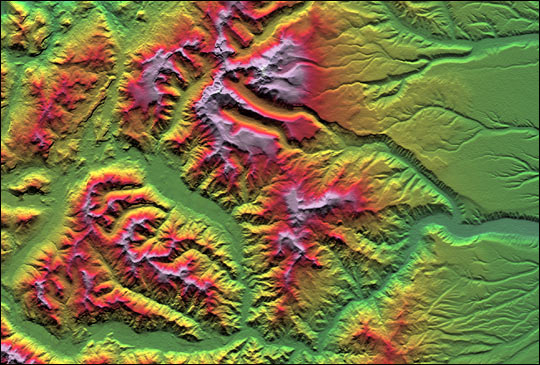


full resolution shaded relief (1.1 MB)
full resolution anaglyph (1.1. MB)
This depiction of an area south of San Martin de Los Andes, Argentina, is the first Shuttle Radar Topography Mission (SRTM) view of the Andes Mountains, the tallest mountain chain in the western hemisphere. This particular site does not include the higher Andes peaks, but it does include steep-sided valleys and other distinctive landforms carved by Pleistocene glaciers. Elevations here range from about 700 to 2,440 meters (2,300 to 8,000 feet). This region is very active tectonically and volcanically, and the landforms provide a record of the changes that have occurred over many thousands of years. Large lakes fill the broad mountain valleys, and the spectacular scenery here makes this area a popular resort destination for Argentinians.
Two visualization methods were combined to produce this image: shading and color coding of topographic height. The shade image was derived by computing topographic slope in the north-south direction. Northern slopes appear bright and southern slopes appear dark, as would be the case at noon at this latitude in the southern hemisphere. Color coding is directly related to topographic height, with green at the lower elevations, rising through yellow, red, and magenta, to white at the highest elevations.
Size: 55.0 x 37.2 kilometers ( 34.1 x 23.1 miles)
Location: 40.4 deg. South lat., 71.3 deg. West lon.
Orientation: North toward the top
Image Data: Shaded and colored SRTM elevation model
Date Acquired: February 2000
Image courtesy NASA/JPL/NIMA